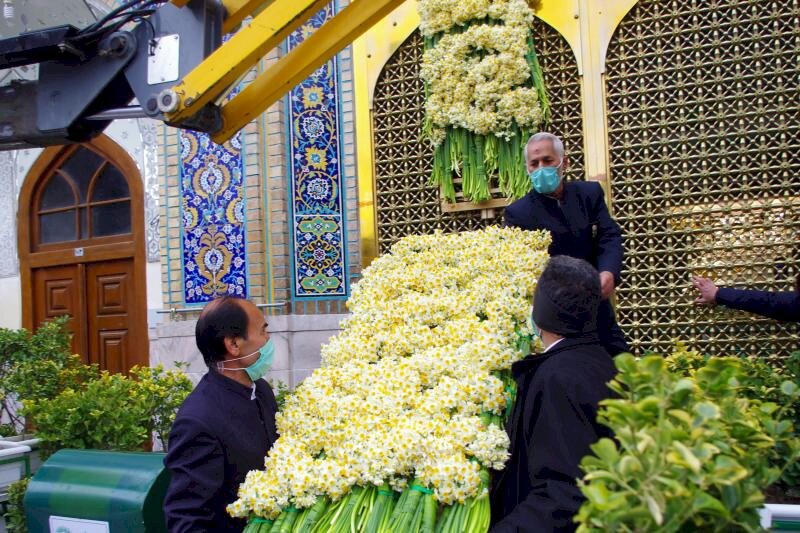Donation of daffodils to Imam Reza (AS) shrine made national heritage

TEHRAN – An annual ritual involving the donation of 8,000 daffodil bulbs to the holy shrine of Imam Reza (AS) has been inscribed on the national heritage list.
The Ministry of Cultural Heritage, Tourism, and Handicrafts announced the inscription on Thursday in separate letters to the governors-general of both provinces, CHTN reported.
The history of the ritual goes back at least 50 years as florists of Behbahan in southwestern Khuzestan province donate their first harvest of daffodils to the holy shrine around late December and early June.
In Persian culture and literature, the daffodil symbolizes the eye, usually the eye of the beloved. A daffodil’s inside recalls the pupil of the eye. In poetry, the beloved is likened to the daffodil because of its leafless and green stem, which is hollowed out, straw-like, and curved, which is associated with humility and dignity.
Mashhad, the provincial capital, is Iran’s holiest and second-largest city. Its raison d’être and main sight is the striking massive shrine complex of Imam Reza (AS), the eighth Shia Imam.
Dozens of five-star hotels and hostels are dotted across Mashhad. The city has also the highest concentration of water parks in the country, and it also embraces a variety of cultural and historical sites that are generally crowded. The metropolis is also a good place to buy top handwoven rugs and carpets, and it’s a staging post for travel to Turkmenistan, Afghanistan, and little-touristic Khorasan regions.
Khuzestan is home to three UNESCO World Heritage sites of Susa, Tchogha Zanbil, and Shushtar Historical Hydraulic System yet it is a region of raw beauty where its visitors could spend weeks exploring. The province is also a cradle for handicrafts and arts whose crafters inherited from their preceding generations.
Lying at the head of the Persian Gulf and bordering Iraq on the west, Khuzestan was settled about 6000 BC by a people with affinities to the Sumerians, who came from the Zagros Mountains region. Urban centers appeared there nearly contemporaneously with the first cities in Mesopotamia in the 4th millennium. Khuzestan, according to Encyclopedia Britannica, came to constitute the heart of the Elamite kingdom, with Susa as its capital.
ABU/AFM
Leave a Comment